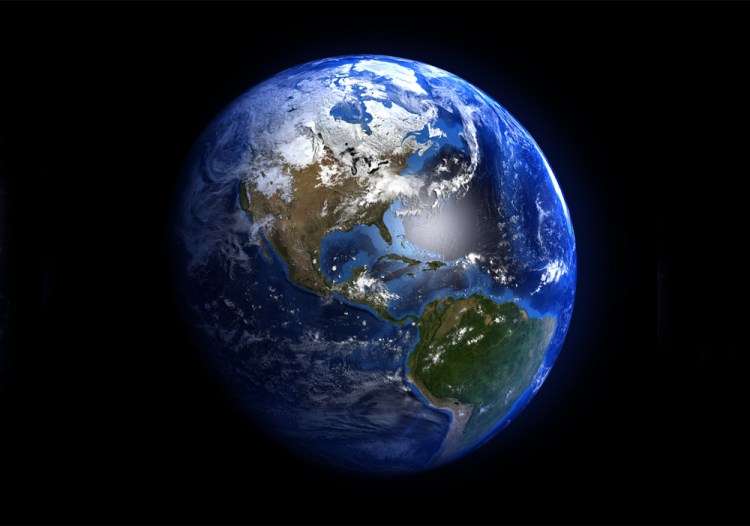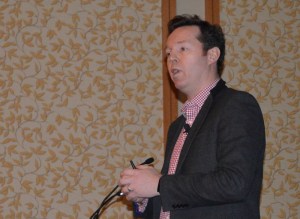VANCOUVER — Every day we have more people, use more water, consume more energy, and spend more on health care on this globe. Solving those problems, according to one ARM director, is the perfect job — and the driving need — for the internet of things.
“The internet of things will be tens of billions of sensors, billions of wireless networks, and tens of millions of cloud apps,” ARM director Gary Atkinson said today at Wavefront’s Wireless Summit in Vancouver. “We need to be able to gather more data to make more granular decisions and be smarter about how we consume resources.”
Each of four key areas of health and wellness is under pressure, Atkinson said.
70 percent of the world’s water is used in irrigation, and we’re running out of fresh water. Many countries, such as the UK, are seeing energy consumption peak within 4 percent of total generation capability — dangerously close to being under capacity. Food is increasingly a problem as arable land is lost to population growth, desertification, and pollution, and health care is a bigger and bigger issue in developed and developing nations as the population ages.
“We have the challenge that people who used to die when they reached 70 or 80 years of age are no longer dying, but still using medical resources,” Atkinson said. “The US is on track to a 35 percent GDP spend on health care, which is unsustainable.”
How the internet of things can help, he said, is by making everything smarter.
Our traditional pivot irrigation mechanisms waste 20 percent of our arable land and massive quantities of water, much of which evaporates before reaching the ground. A smart drip irrigation system that knows when the soil is damp and only waters when needed would save perhaps half that water. And lighting, which uses roughly half the electricity generated on the planet, needs to be smarter, with street lights need to dim when not in use.
 Similarly, remote health care and smart technologies for helping seniors stay independent and mobile, including health monitoring and warning devices, hold great promise for both improving health care and reducing costs, Atkinson said.
Similarly, remote health care and smart technologies for helping seniors stay independent and mobile, including health monitoring and warning devices, hold great promise for both improving health care and reducing costs, Atkinson said.
To make it work, however, prices have to come down.
“We need endpoints with 10-15 year batteries, 5-mile range, and $2 cost per year to connect them,” Atkinson said. “If you have to pay $5, $7, $8 per device per year, the cost models don’t work.”
Which, of course, makes ARM attractive.
ARM-based processors currently power 96-97 percent of all smartphones on the planet, because they are both designed to have low power consumption … and be cheap. ARM thinks those qualities will help it power a globe full of tiny smart devices as well.
“We were successful because we designed for power consumption from day one … everything we do is about low power,” Atkinson, who was not able to resist a dig at Apple, said. “We also license our technology to many companies, which is why you can buy a smartphone in China for about $50 … which gives you access to the same universe of apps that you can get from a certain company with a fruit logo.”
VentureBeat's mission is to be a digital town square for technical decision-makers to gain knowledge about transformative enterprise technology and transact. Learn More


